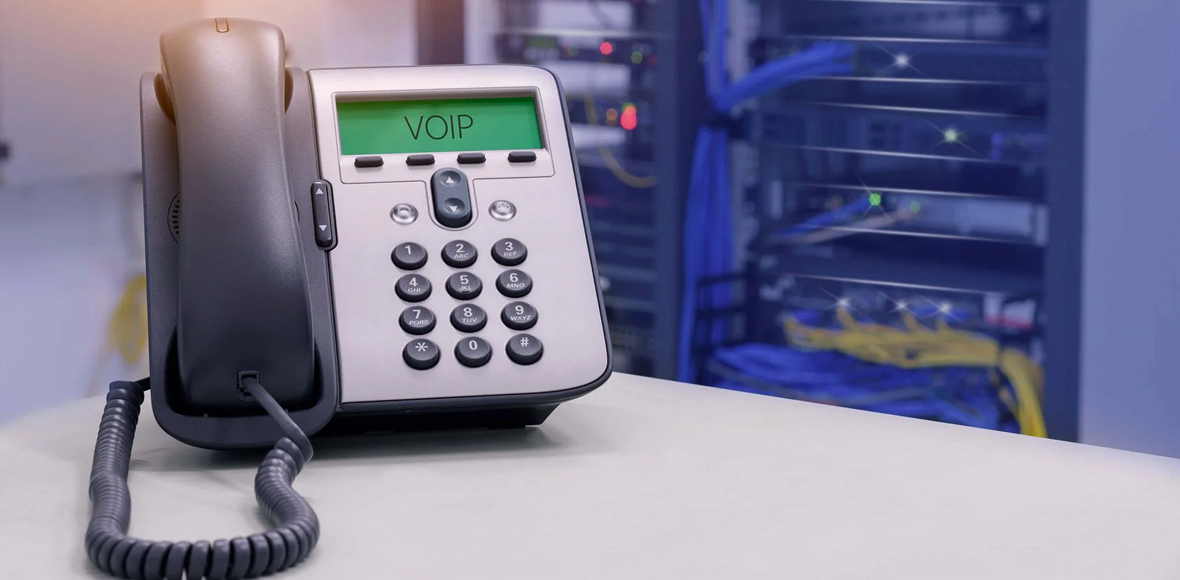1. Crackly Calls and Dropped Connections: Do clients often say, “I tried calling but couldn’t get through,” or “Your line was cutting out”?
Poor call quality is a big red flag. If you hear static, crackling, or if calls randomly drop, your phone line infrastructure could be to blame
addcomnc.com. Traditional copper phone lines can degrade over time – corrosion, loose connections, or old wiring in your building can introduce noise. Beyond being an annoyance, bad call quality projects an unprofessional image. Clients might hesitate to conduct business by phone if they can’t hear you clearly or if calls keep failing. In today’s fast-paced world, everyone expects a crystal-clear connection. If you find yourself apologizing often for “technical issues” on calls, it’s a sign the backbone of your communication (your phone line) isn’t keeping up.
Dropped calls are especially damaging. Missing or interrupting a customer’s call – or a conference call with your team – can halt business in its tracks. You shouldn’t have to send emails saying “sorry, my phone line cut out.” That’s a sign it’s time to upgrade either the physical line or move to a more reliable system (like an internet-based phone service on a solid data network).
2. Sky-High Bills and Maintenance Costs: Are you paying a small fortune for phone line rentals, long-distance charges, or technician visits to maintain old PBX hardware? Older phone systems tend to be costly to maintain
addcomnc.com. Perhaps you have an on-site PBX (the box that routes calls internally) that needs regular servicing, or you’re still paying per-minute fees on traditional lines. As your business grows, adding more lines incurs significant costs with legacy systems – not just in telecom charges but often needing a technician to physically install and configure new lines.
In contrast, modern VoIP (Voice over Internet Protocol) systems often have a flat subscription and use your existing internet connection, saving money. Many businesses find that switching to a cloud phone service cuts their phone bill by 30-50%. If your phone expenses are climbing or unpredictable month to month, that’s a sign your current setup is economically inefficient. The money spent on maintaining outdated phone tech could be better invested elsewhere in your business.
3. Hard to Scale or Adapt:One test: if adding a new employee’s phone or an extra line for a fax/credit card machine is a major ordeal, your phone system is holding you back.
Legacy landline systems are notoriously hard to scale addcomnc.com. You might have a limited number of lines coming into the building, or your PBX can only handle so many extensions. When growth means calling your phone provider to physically install new lines (and maybe drilling through walls) – plus maybe a day or two of downtime – it’s time to reconsider. As one communications provider put it, “If adding a new phone line means calling a technician and experiencing downtime, it’s time for a change.”
addcomnc.com
Today’s businesses need flexibility. Perhaps you want to add a phone line for a new hire, set up a temporary call center for a project, or allow employees to take calls from home or on their mobiles. Older systems don’t handle this gracefully. They’re tied to specific locations and hardware. If your system isn’t easily supporting remote work, call routing, or quick scaling up/down, that’s a glaring sign of a limitation. Modern systems let you add lines or users via software in minutes, not days.
4. Limited Features Impeding Productivity: Does your current phone line/system basically just make and receive calls, and not much else? In a world of smartphones and smart apps, sticking with a feature-poor phone system can hurt your team’s efficiency. Signs of this include:
no support for voicemail-to-email, no call transferring or conferencing features, inability to easily forward calls to mobile when you’re out, or lack of an auto- attendant. These are features many newer systems have out of the box, which help you present a professional image and save time.
For example, an auto-attendant can greet callers and route them (press 1 for sales, 2 for support, etc.), so your receptionist isn’t overwhelmed. Voicemail-to-email means if you miss a call, the message pops up in your inbox to review – no dialling into a clunky voicemail box. If your employees can’t work from home because your phones are stuck in the office, that’s a huge limitation (especially after the lessons of 2020). Traditional setups often don’t support remote work or mobility well
addcomnc.com.
Also consider integration: modern communications platforms can integrate with your CRM or helpdesk software, automatically logging calls or enabling click-to-dial. If your salespeople have to manually dial every number and then separately log the call, that’s double work. Not having features like these in 2025 is a competitive disadvantage. Your competitors might be using unified communication tools that let them respond faster and appear more professional.
5. Outdated Technology (POTS and PSTN Phase-Out): This is a big one that many overlook: if you’re still using POTS (Plain Old Telephone Service) lines or an ISDN system,
the clock is ticking. Telecom companies in many countries, including Australia, are actively phasing out old copper-based phone networks in Favour of digital and VoIP. In Australia, the NBN rollout led to the disconnection of many traditional services (ISDN lines began disconnection in 2019)
support.voipcloud.online. Relying on an aging technology means you could wake up to find your service discontinued or unsupported. Even if not cut off, older systems become harder to repair – parts get scarce and technicians skilled in legacy PBX or ISDN are retiring.
An outdated phone system is also likely
insecure and less reliable. Old analog lines can be susceptible to eavesdropping and have no encryption. They are also subject to environmental issues – a bit of water in an old underground cable can knock out your phones. If your system is 10, 15, or 20 years old, think about the tech changes since it was new. Would you still use a 15-year-old PC or cellphone to run your business? Probably not. Yet some businesses hang on to decade-old phone tech because “it still mostly works.” Meanwhile, these systems often fail at the worst times and lack any modern failover.




